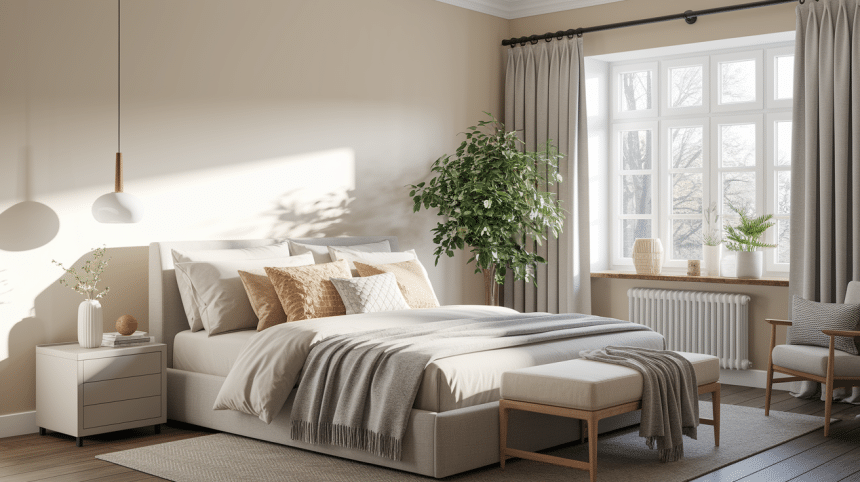Have you ever tossed and turned all night in a bedroom that feels… wrong? Too cramped to move freely or so large it feels empty and cold?
Getting your master bedroom size right matters more than you might think. It’s the room where you start and end each day. The place that should help you relax after a long day of work.
Many homeowners struggle with bedroom dimensions. Some end up with cramped and cluttered rooms, while others have too much empty space that feels cold and unwelcoming.
This guide will help you understand the ideal master bedroom dimensions. You’ll learn how much space you really need for comfort. We’ll share practical tips to make any bedroom—regardless of size—feel just right for your needs.
Let’s figure out how to create a bedroom that gives you the rest you deserve.
Master Bedroom Size: What’s the Ideal Dimension?
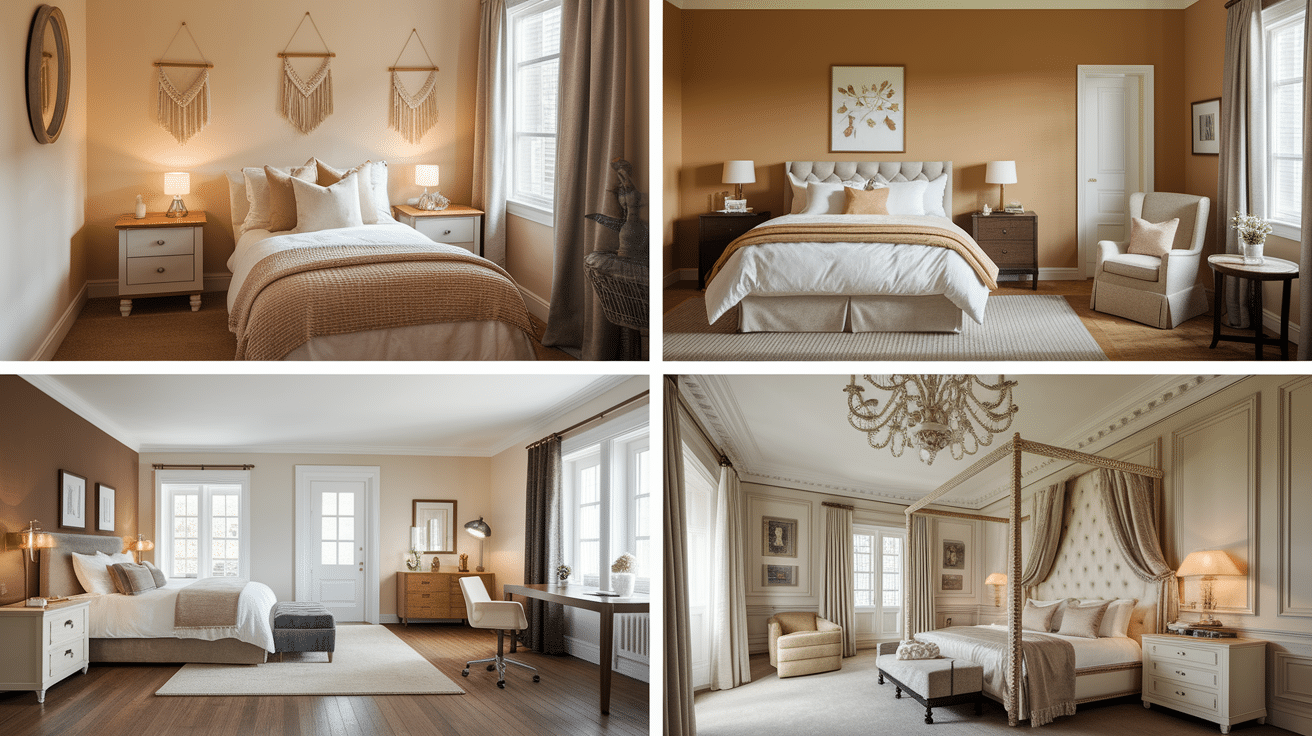
The question of “how big should a master bedroom be?” doesn’t have a one-size-fits-all answer.
Bedroom sizes vary widely depending on your home type, available space, and personal needs. While some people prefer cozy, intimate spaces, others might want room for additional furniture or activities beyond just sleeping.
Let’s break down the typical master bedroom dimensions you’ll find across different types of homes in the housing market.
This should give you a clearer picture of what might work for your specific situation.
Standard Bedroom Dimensions By Home Type
Here’s a helpful reference guide showing common master bedroom sizes across different home types:
| Home Type | Average Size (sq ft) | Dimensions (ft) |
|---|---|---|
| Small Homes | 150 – 220 | 14 x 14 |
| Medium Homes | 230 – 300 | 14 x 20 |
| Large Homes | 300 – 350 | 16 x 20 |
| Luxury Homes | 360 – 420 | 20 x 20 |
Keep in mind that these are general guidelines. Your actual space may vary based on your home’s layout, age, and design style.
The important thing is finding a bedroom size that meets your needs while still feeling comfortable and functional.
Key Factors That Influence Master Bedroom Size
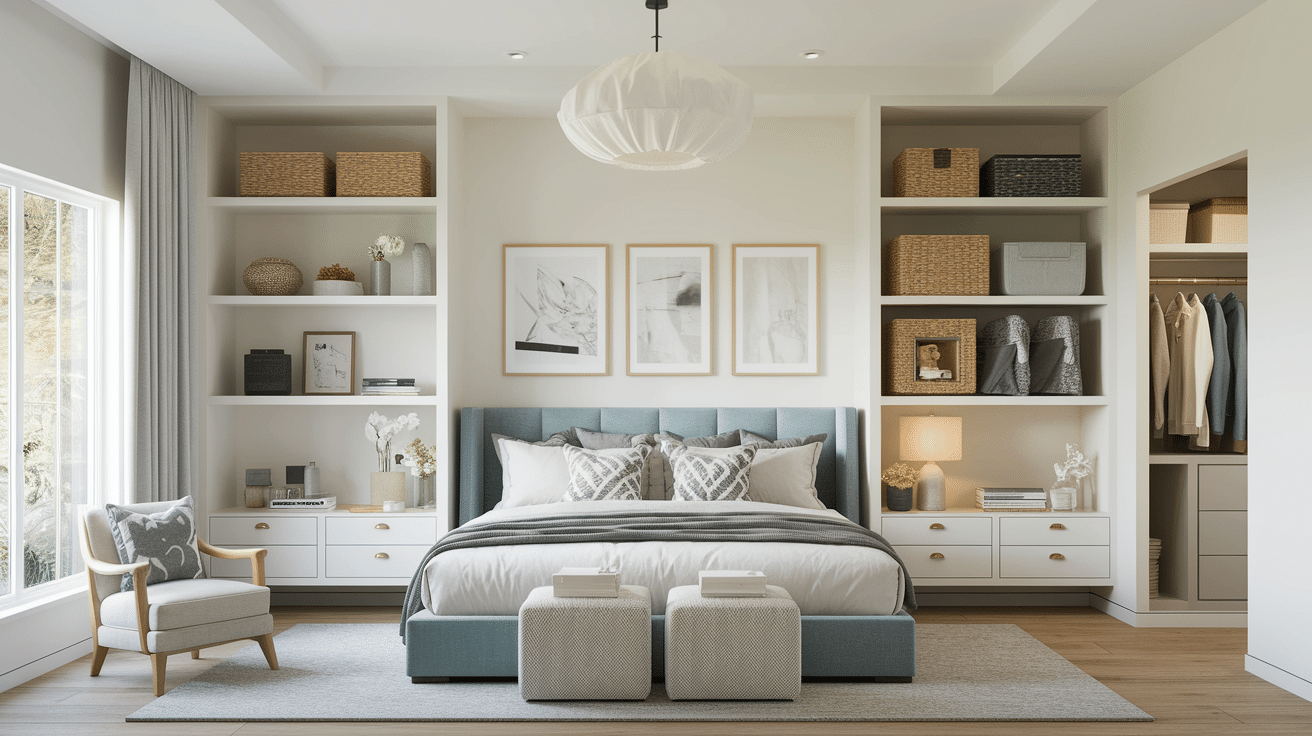
When planning your master bedroom, several key factors determine the ideal size. Here’s what to consider before finalizing your bedroom dimensions.
1. Your Lifestyle Needs
How do you use your bedroom? Is it just for sleeping? Or more?
Some people want space for a comfy reading chair. Others need room for a small desk. Maybe you dream of a TV viewing area with seating. Your daily habits should shape your bedroom size. More activities mean more square footage.
2. Bed Size & Furniture Placement
Your bed choice matters—a lot.
A king bed needs about 42 square feet more than a queen. Don’t forget the walking space! You need at least 2 feet around the bedsides. Larger furniture requires more room to avoid a cramped feel.
Also think about:
- Nightstands (1-2)
- Dresser placement
- Potential bench at the foot of the bed
3. Overall Home Size & Layout
Your bedroom should make sense in your whole house.
Most master bedrooms take up 15-20% of total home square footage. Too big or too small can feel off-balance. The room’s location matters, too. Corner rooms might offer more windows. Central rooms might be quieter.
4. Closet & Storage Requirements
How much stuff do you have? Be honest!
Walk-in closets save bedroom space by moving storage elsewhere. Built-ins can make smaller rooms work better. Consider your wardrobe size and seasonal items. Good storage prevents bedroom clutter.
5. Attached Bathroom Considerations
An ensuite bathroom adds convenience but takes up space.
You might face choices: a larger bedroom or a more luxurious bathroom. Shared bath or a private one? Even a small ensuite needs at least 25-30 square feet for basics.
6. Budget & Construction Constraints
Bigger isn’t always better if the budget is tight.
Larger rooms cost more to build, heat, cool, and furnish. Sometimes a well-designed smaller room feels better than a poorly planned large one. Consider long-term costs, not just construction expenses.
Design Ideas for Master Bedroom
Your bedroom layout can make or break your space. Good design transforms even modest dimensions into functional, comfortable retreats. Here are practical ways to maximize your master bedroom’s potential.
Create a Smooth-Flowing Layout
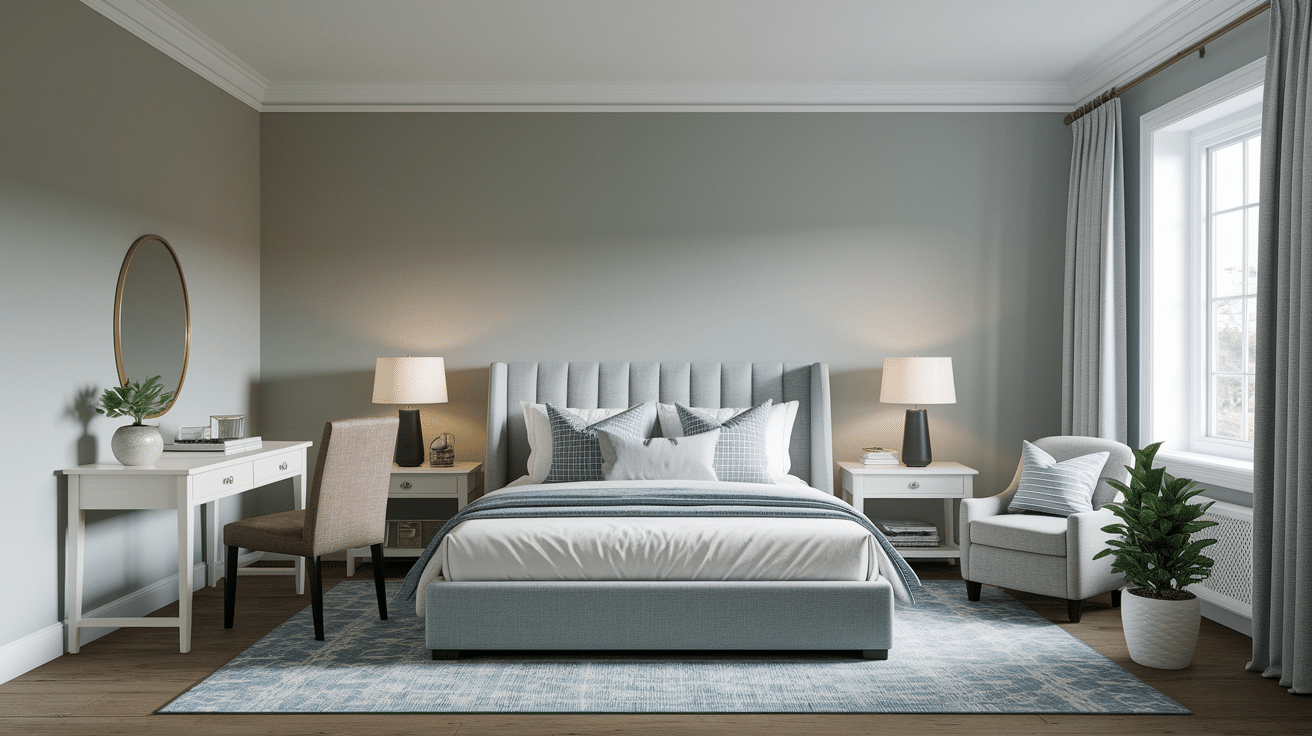
Arrange furniture to create clear pathways. Position your bed on the focal wall. Keep nightstands balanced. Create zones for sleeping, dressing, and relaxing.
Try this, Draw your room on paper before moving furniture. This simple step saves hours of heavy lifting.
Space-saving option: Consider a platform bed with built-in storage to eliminate the need for extra dressers.
Quick tips:
- Leave 2-3 feet between furniture pieces for easy movement
- Position the bed so you can see the door (but not directly in line with it)
- Arrange nightstands and lamps symmetrically for balance
- Keep frequently used items within arm’s reach
A good layout feels natural. You should move easily from the door to the bed to the closet.
Leave Enough Room to Move Around
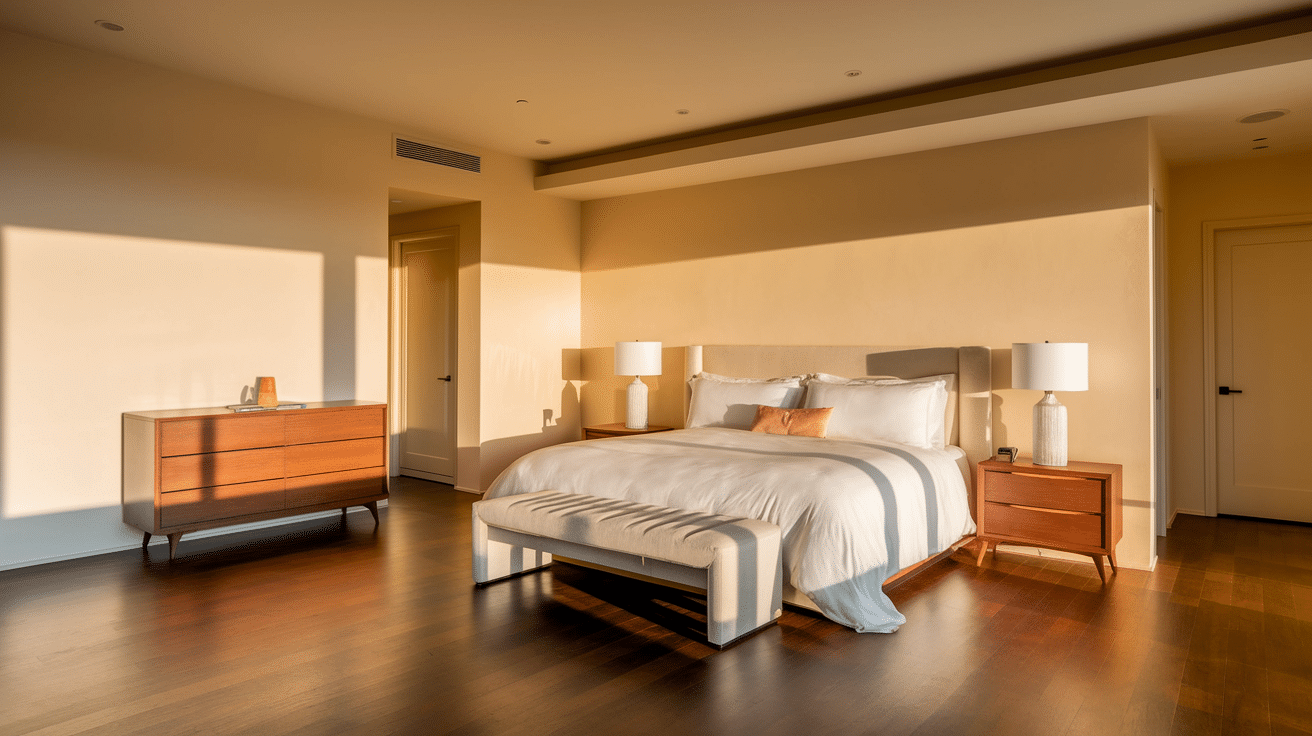
Tight spaces feel stressful. Leave at least 2-3 feet between large furniture pieces.
Your bed needs breathing room—at least 2 feet on the sides and 3 feet at the foot. This prevents stubbed toes and makes bed-making easier.
Minimum clearances:
- 2 feet on bedsides
- 3 feet at bed foot
- 3 feet in front of dressers
- 2 feet around chairs
Quick tips:
- Mark walking paths with painter’s tape before finalizing furniture placement
- Remove doors from closets in very small rooms to gain inches
- Consider a sliding barn door for the bathroom to save swing space
- Round furniture has softer edges, creating better flow in tight spaces
Light-colored flooring makes walkways appear more spacious.
Brighten Your Room with Natural Light
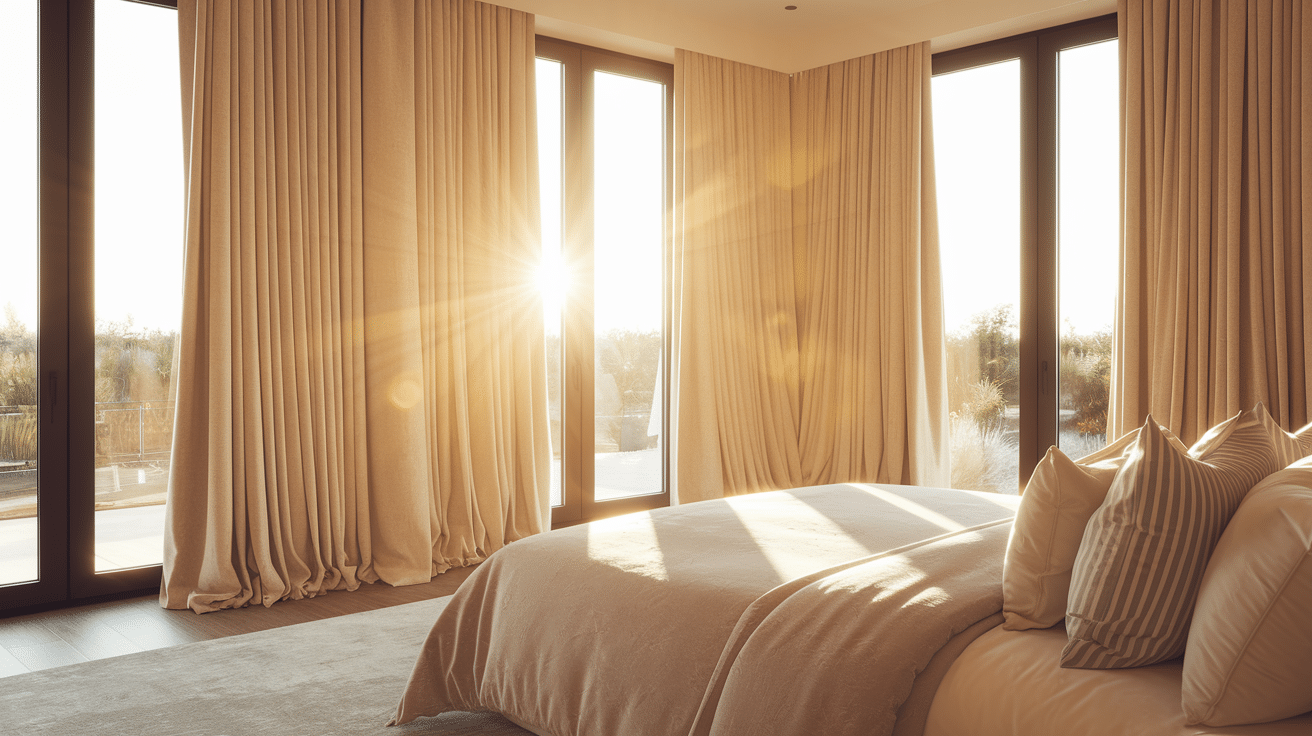
Windows change everything. Position your bed to enjoy the view, but not directly under windows. Simple fixes:
- Clean windows regularly
- Trim outside branches blocking light
- Use light-colored window treatments
- Keep windowsills clear
Quick tips:
- Hang curtains higher and wider than the window frame
- Use mirrors strategically to bounce light around the room
- Choose glass or acrylic furniture that doesn’t block light
- Opt for glossy finishes that reflect more light
Avoid blocking natural light with tall furniture. Use sheer curtains for privacy without sacrificing brightness.
Keep Clutter Away with Smart Storage
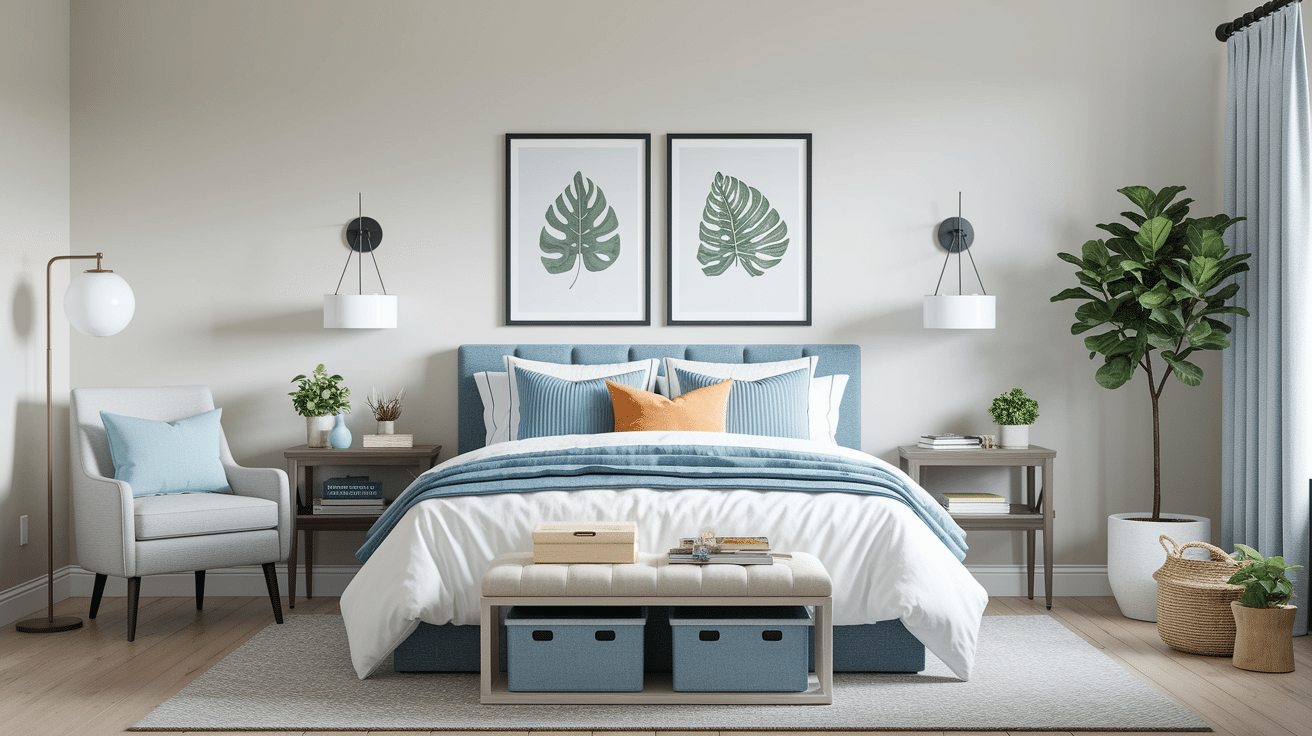
Clutter shrinks rooms visually. Choose multi-functional pieces like storage ottomans or beds with drawers.
Hidden storage ideas:
- Under-bed containers
- Over-door organizers
- Hollow ottomans
- Headboards with shelving
Quick tips:
- Follow the “one in, one out” rule for bedroom items
- Use vertical space with tall, narrow dressers
- Install hooks on the back of doors for robes and bags
- Consider seasonal clothing rotation to free up closet space
Matching containers and baskets creates a cohesive look that feels less cluttered. Wall-mounted nightstands save floor space. Floating shelves add storage without visual weight.
Add a Comfortable Place to Sit
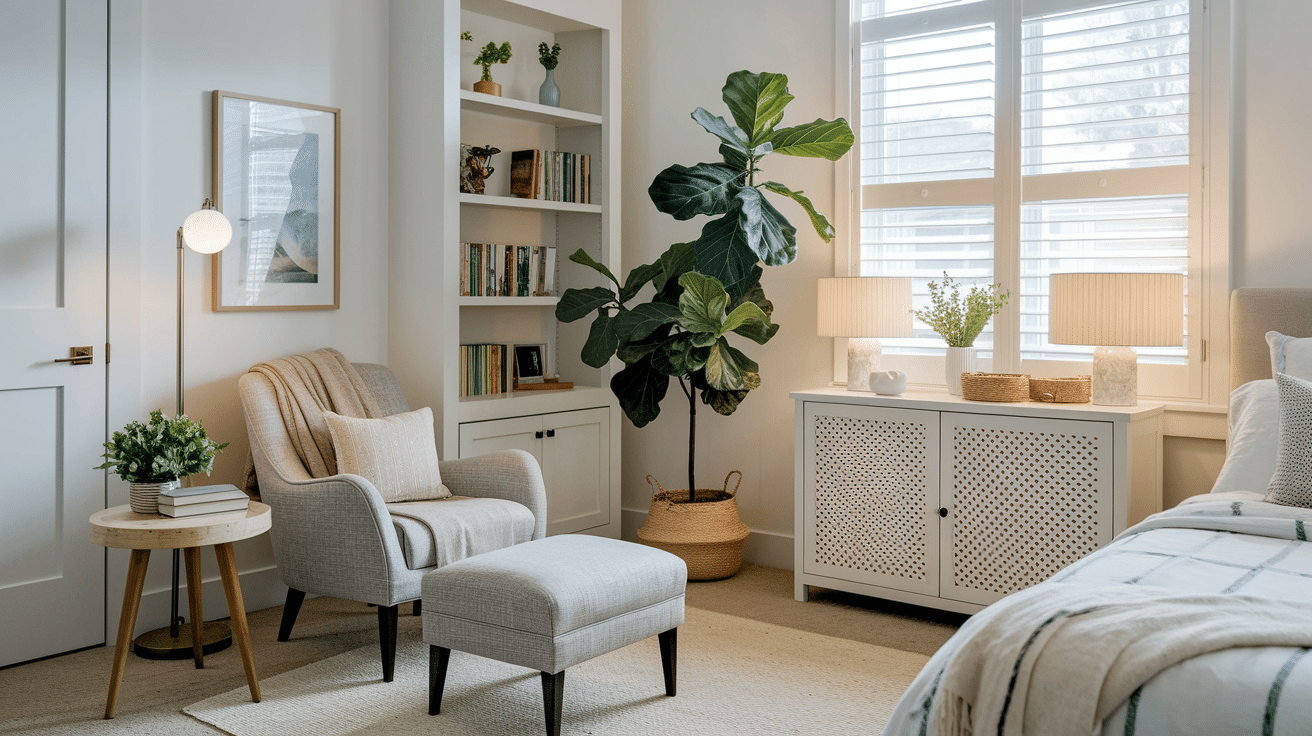
Even small bedrooms can include a reading nook. A single comfortable chair with good lighting creates a retreat.
What makes a good sitting area:
- Natural light, if possible
- Task lighting for reading
- Small side table for drinks
- Soft, washable throw blanket
Quick tips:
- An upholstered chair takes up the same space as a large dresser, so choose wisely
- Bay windows make natural nooks without using extra floor space
- Position seating to enjoy the best view in the room
- A small bookshelf nearby keeps reading material handy
A corner chair takes up less room than one placed in the middle of a wall. Larger rooms might fit a loveseat or bench. Position seating near windows when possible.
Choose Furniture That Fits Your Room Shape

Square rooms balance well with centered beds. Long, narrow rooms work better with furniture along the walls.
Room shape solutions:
- L-shaped: Use the short section for seating
- Narrow: Place bed along shorter wall
- Wide: Create distinct zones with area rugs
- Awkward corners: Perfect for plants or floor lamps
Quick tips:
- Use painter’s tape to outline furniture placement before buying
- Consider the visual weight of pieces, not just their actual size
- Create balance with nightstands of equal height but different styles
- Use color to unify mismatched furniture pieces
Odd-shaped rooms? Create balance with careful furniture placement. Use rugs to define spaces within the room.
Standard Bedroom Size Guide for Other Rooms
Your master bedroom isn’t the only sleep space that needs proper planning. Here’s what works for other bedrooms in your home.
Kids’ Room & Nursery: Ideal Layout
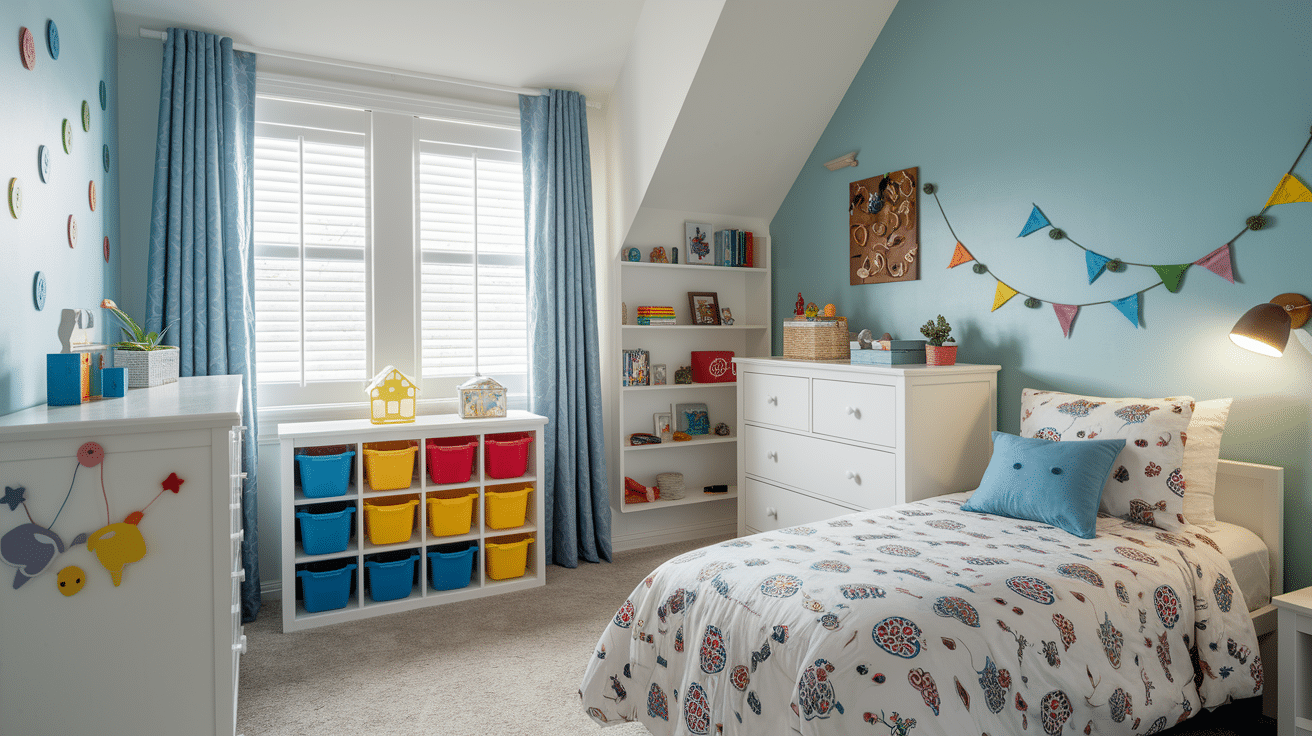
Children need less space but more flexibility in their rooms.
A standard child’s bedroom works well at 100-150 square feet. This fits a twin or full bed, dresser, and play area.
For nurseries, 100 square feet is typically enough. Plan for growth – that crib will eventually become a bed.
Keep storage accessible for young children so they can clean up independently.
Simple additions:
- Multi-bin storage system that grows with your child
- Washable wall paint for inevitable artistic expressions
- Night light with adjustable brightness for different ages
Guest Bedroom: Creating a Comfortable Stay
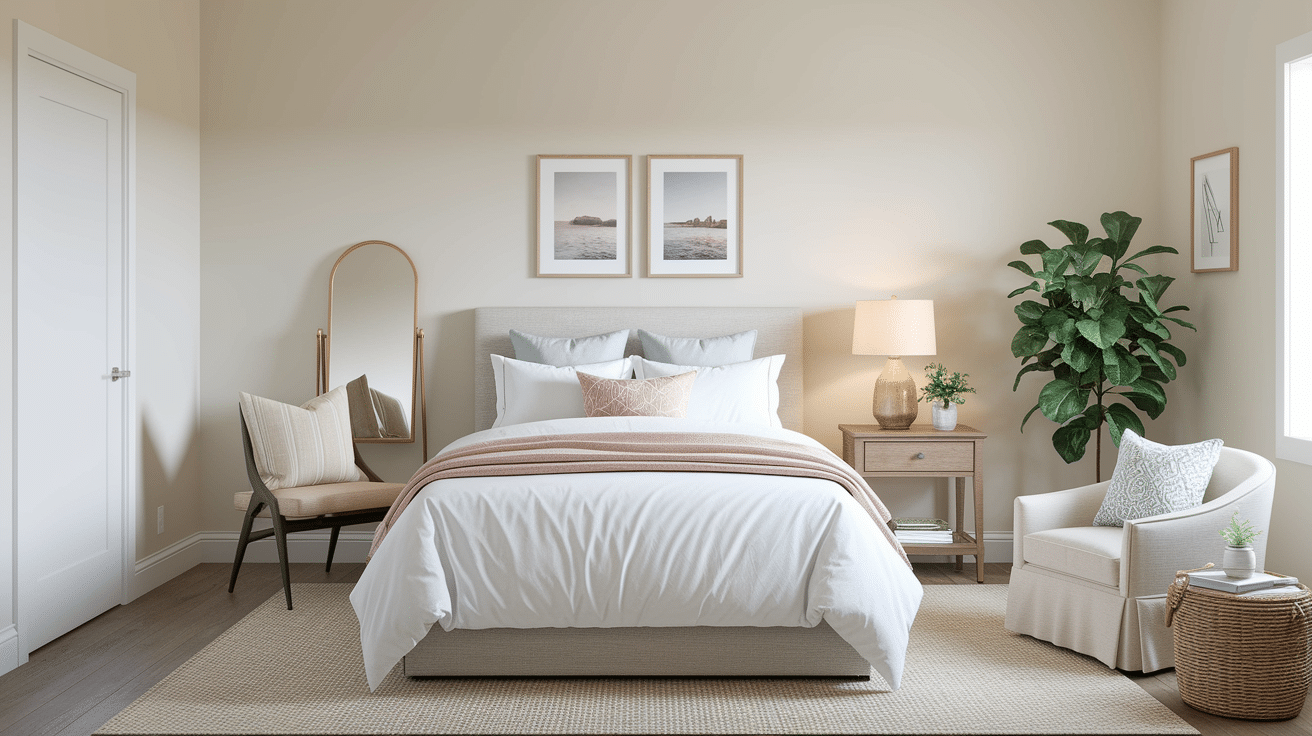
Guest rooms don’t need to be huge, just thoughtfully arranged.
A comfortable guest room starts at about 100-120 square feet. This fits a queen bed with walking space and basic furniture.
Include a nightstand, lamp, mirror, and some hanging space for clothes.
Leave floor space for luggage and provide at least one empty drawer for guests’ belongings.
Simple additions:
- Small tray with water carafe and glass
- Extra phone charger by the bed
- Folded extra blanket at the foot of the bed
Teen Bedroom: Balancing Privacy and Function
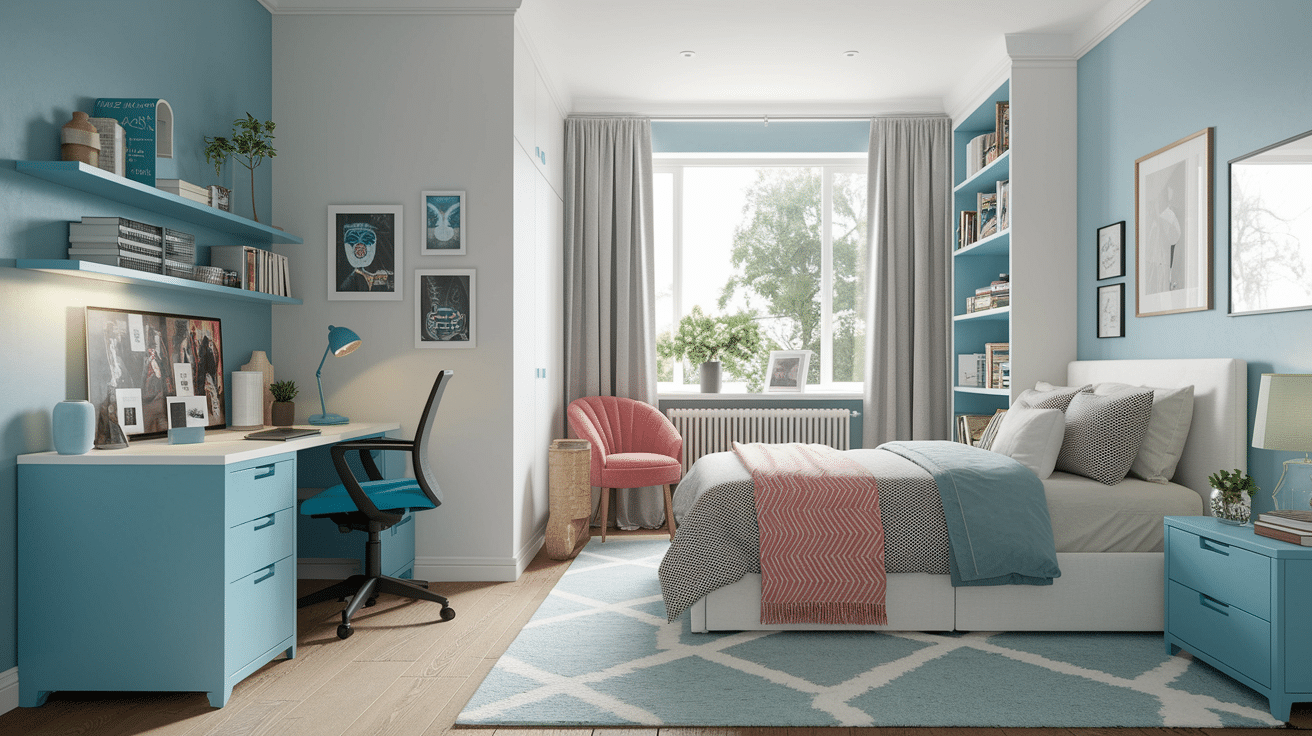
Teenagers need spaces that support independence.
A teen bedroom works best at 120-170 square feet. This allows for a larger bed, desk for schoolwork, and storage for their growing collections.
Include dedicated study space with good lighting. Homework needs have priority in teen room planning.
Flexible seating options let teens host friends comfortably.
Simple additions:
- Bulletin board for photos, tickets and memories
- Good desk chair that supports proper posture
- Power strip with USB ports for multiple devices
Wrap-Up: Find Your Perfect Bedroom Size
Creating the right bedroom size isn’t about following rigid rules—it’s about finding what works for your specific needs and home.
The ideal bedroom balances proper dimensions with thoughtful design. A well-planned smaller room often feels better than a poorly organized large one.
Remember key principles: allow enough walking space, maximize natural light, reduce clutter, and choose appropriately-sized furniture. These elements matter more than square footage alone.
Consider how you actually use your bedroom beyond just sleeping.
Do you need space for reading, working, or exercise? These activities should guide your decisions about size and layout.
When bedroom dimensions align with your lifestyle, you create a true sanctuary—a place where you can truly relax and recharge at the end of each day,

